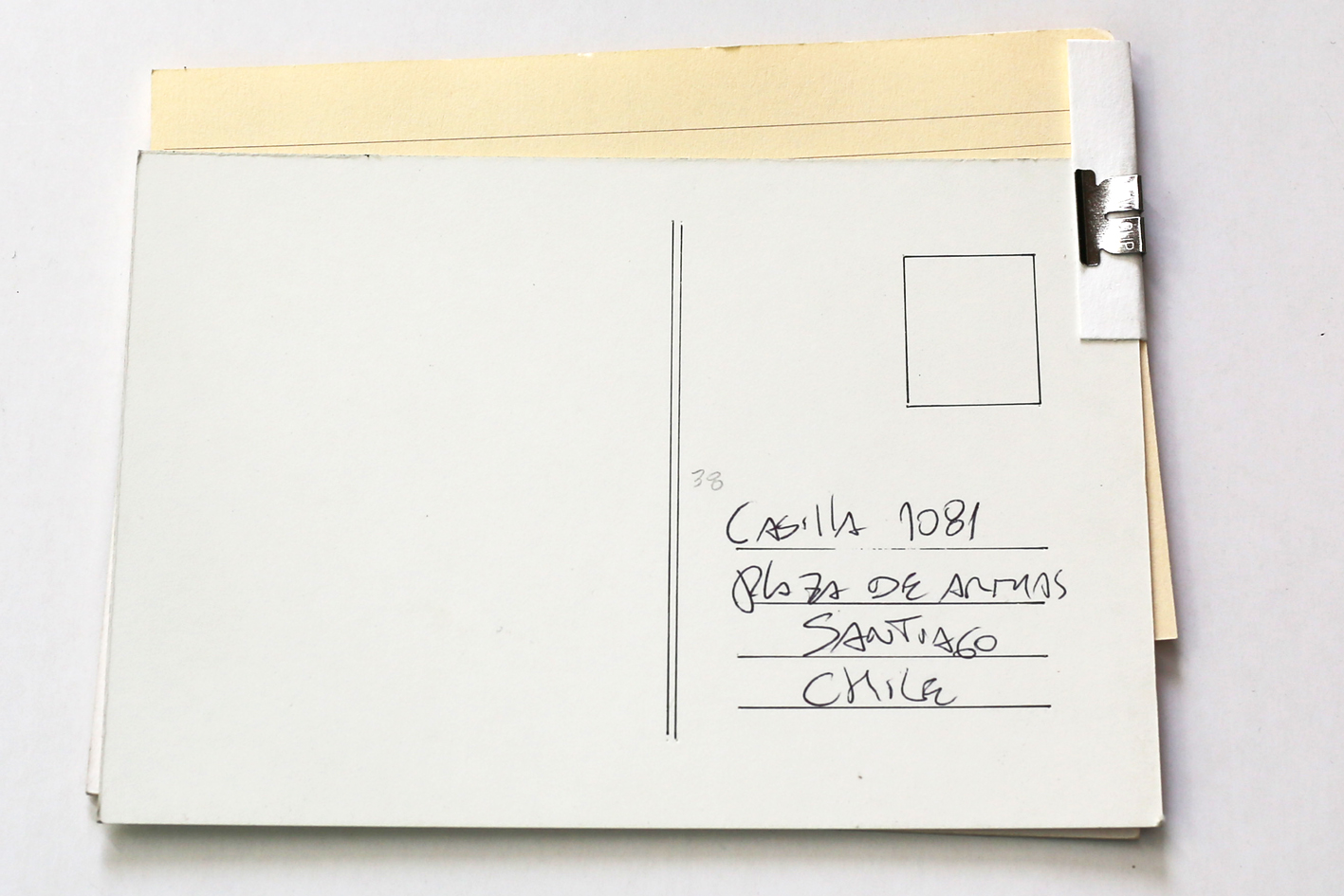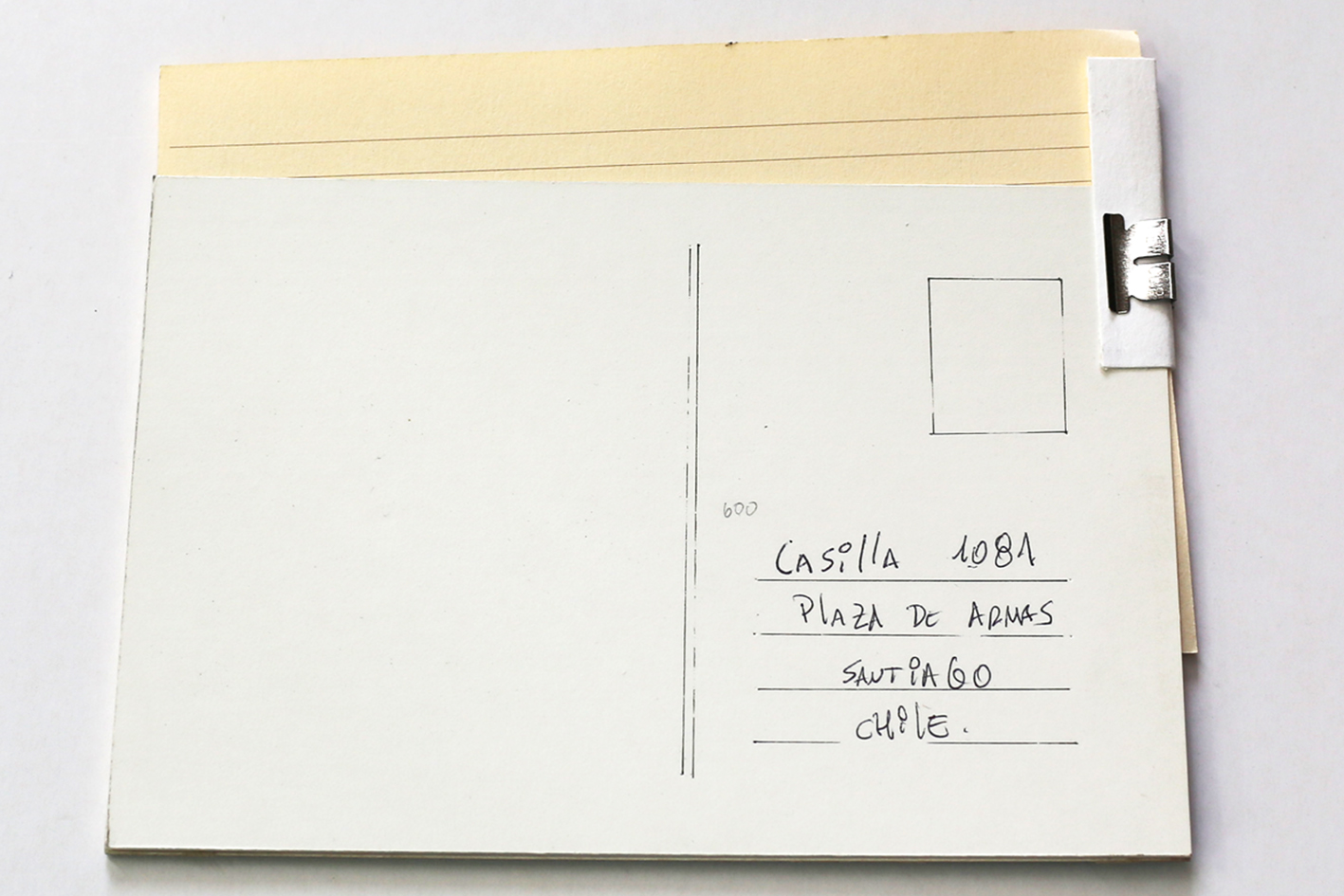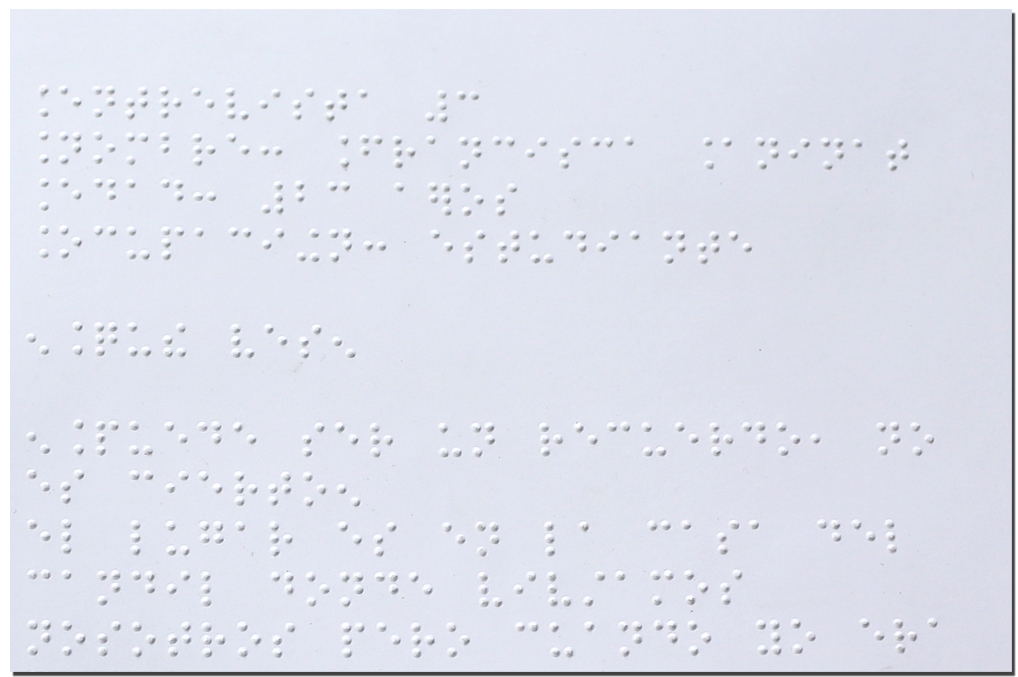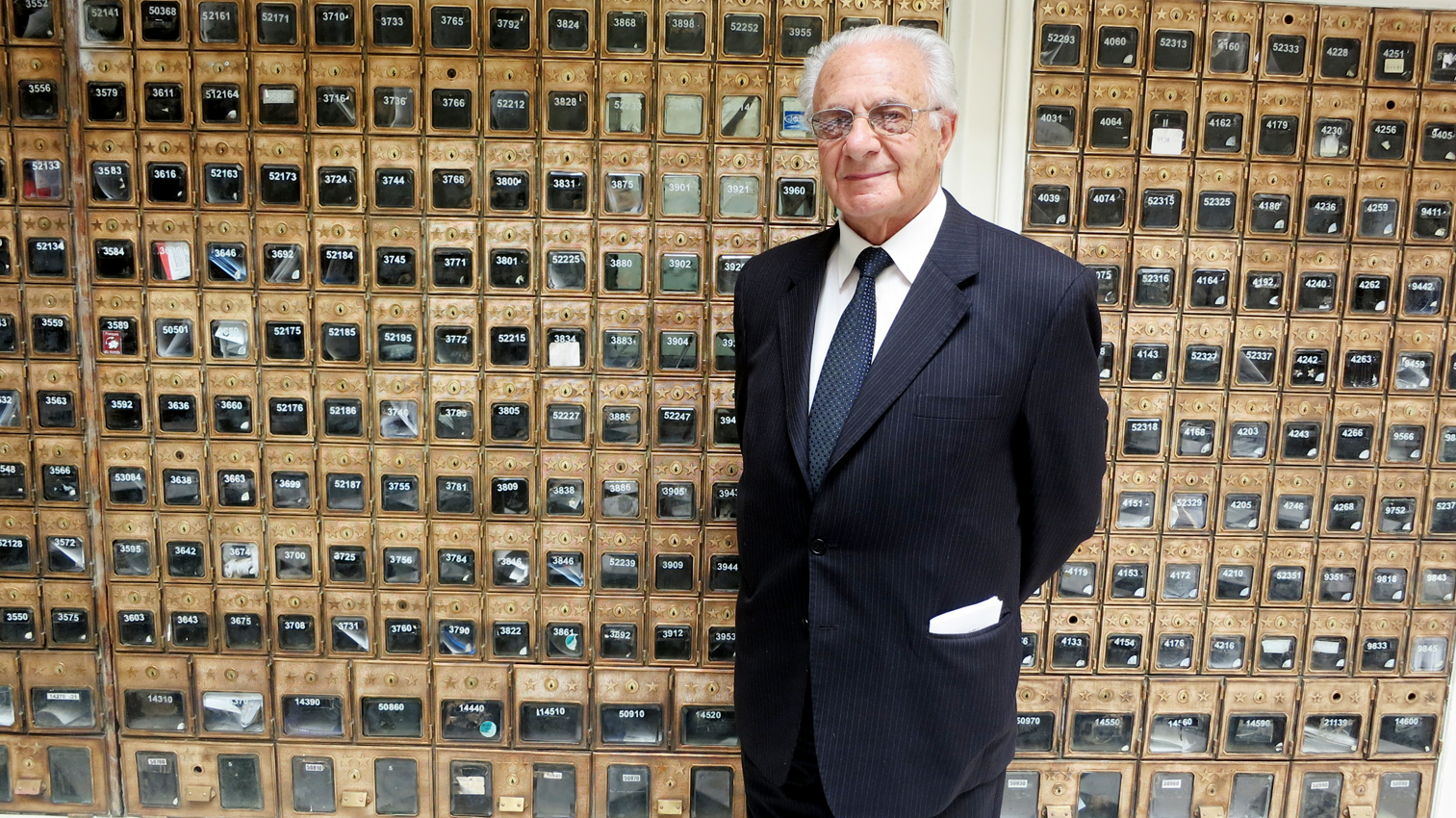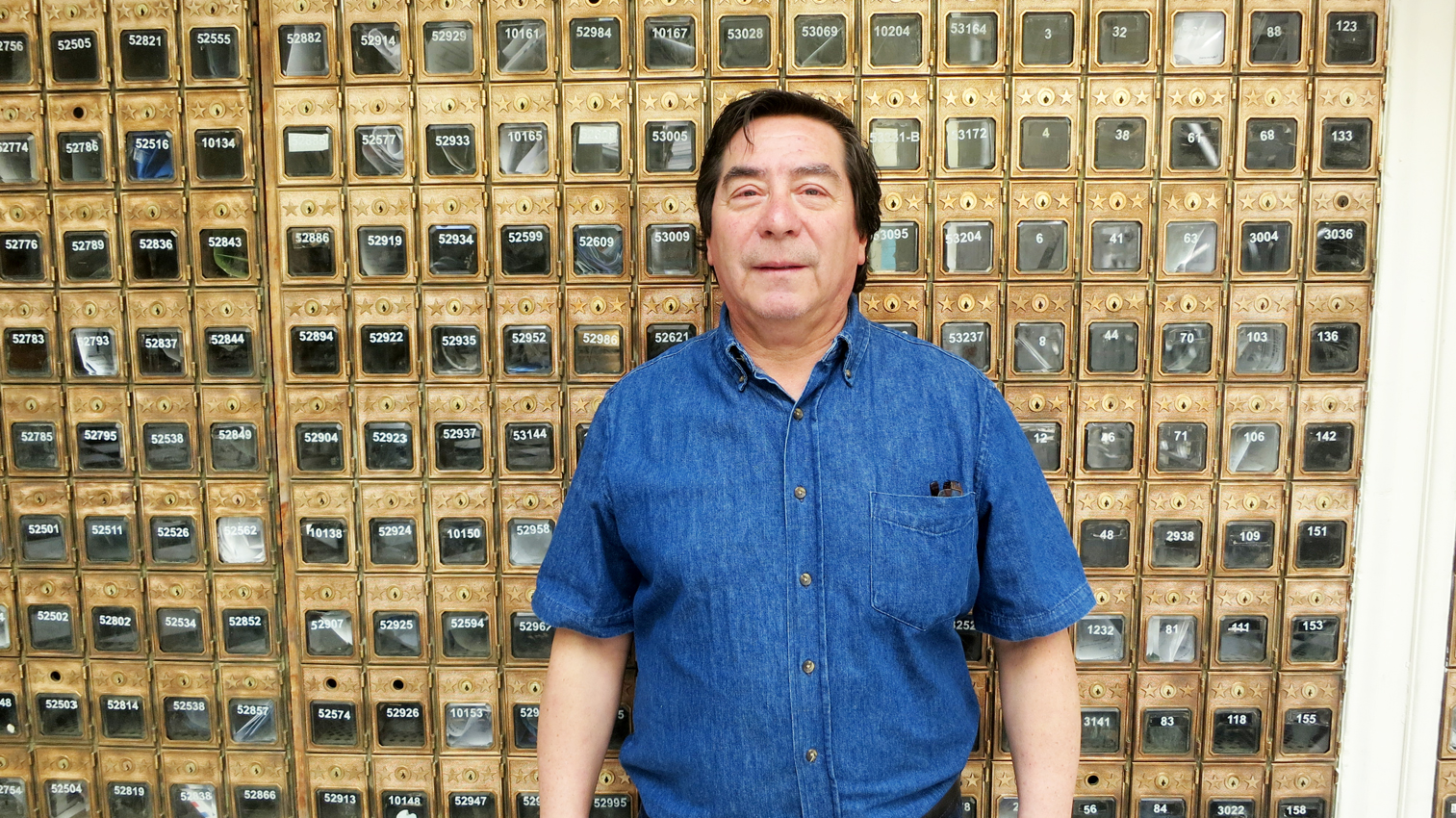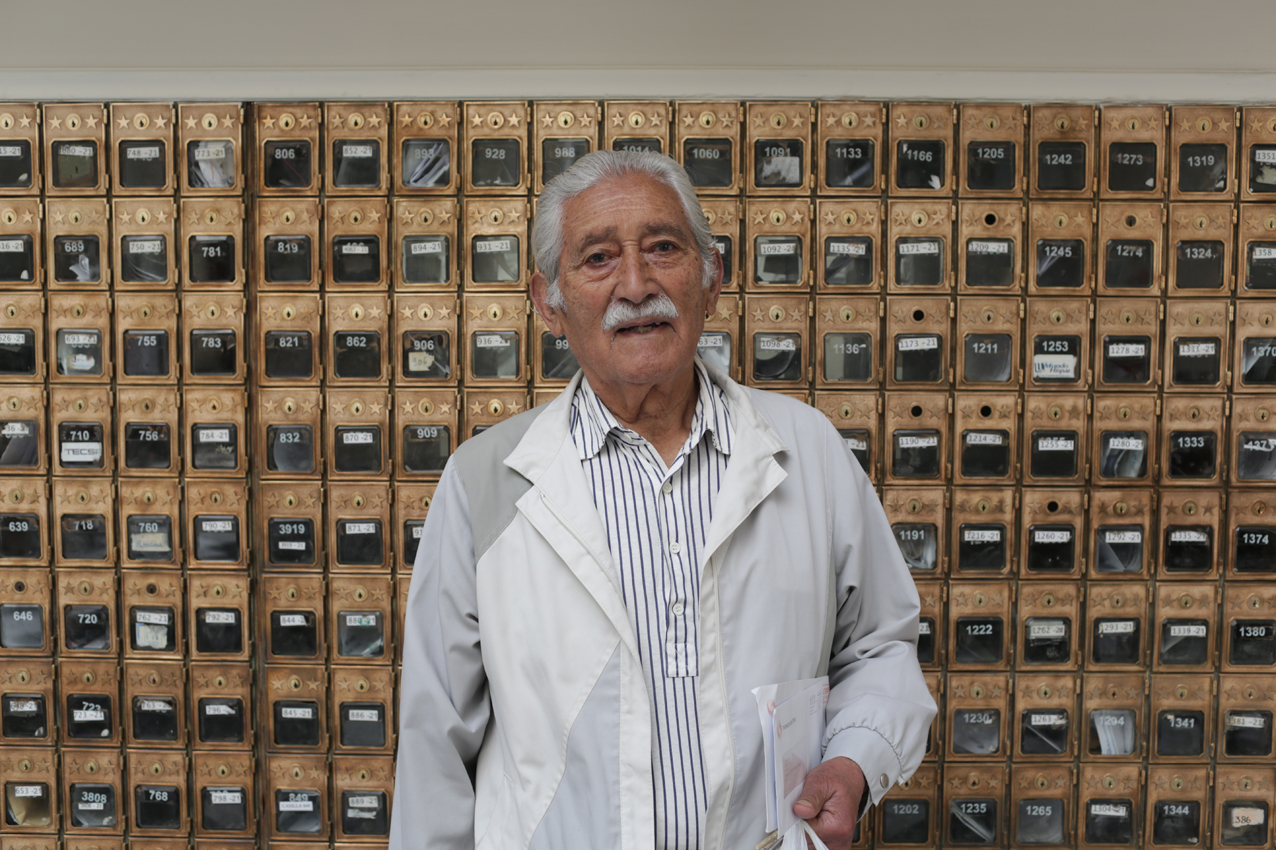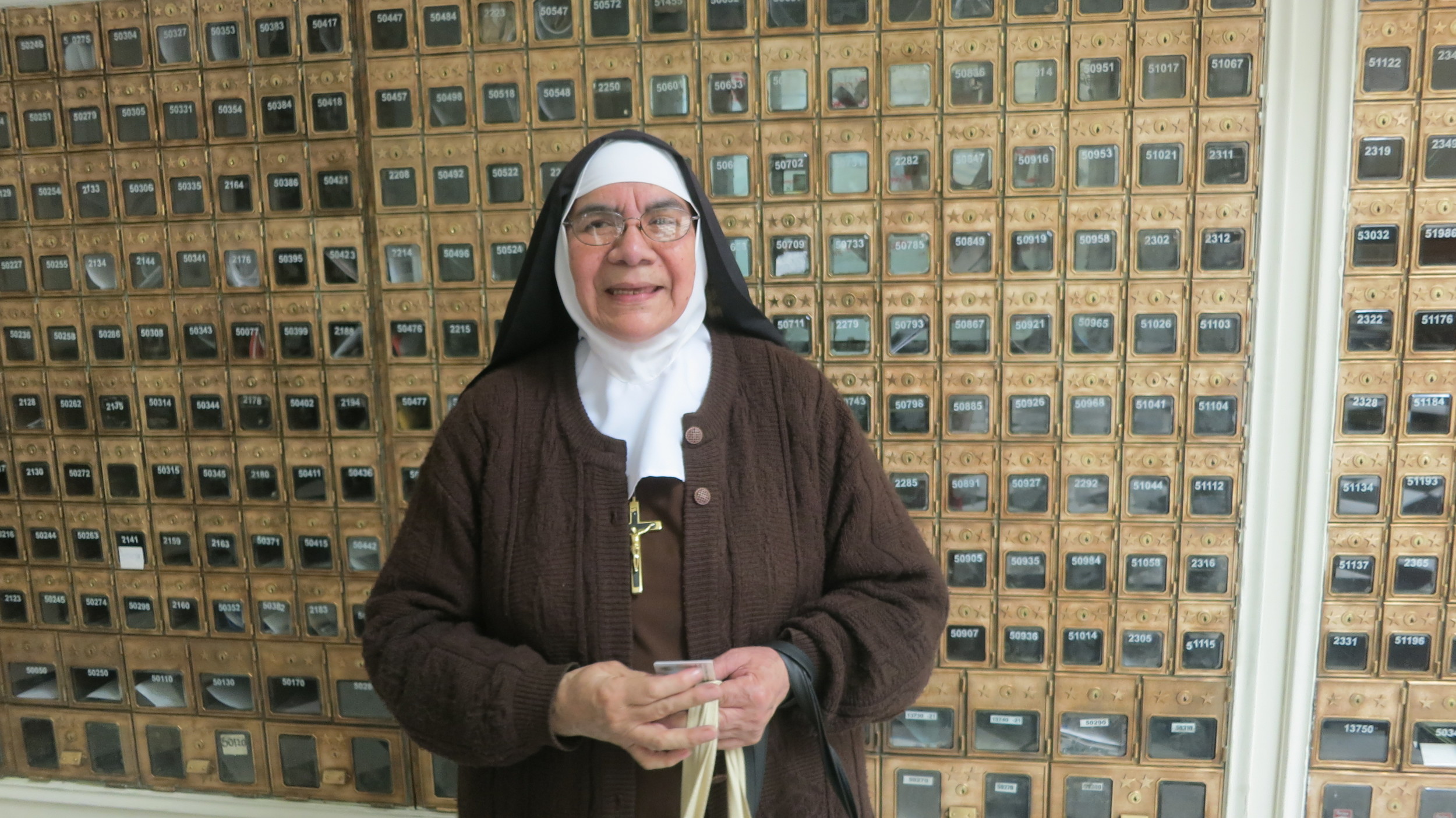PLAZA DE ARMAS
SANTIAGO DE CHILE, 2014
En octubre del año 2014 Teresa Aninat exhibe en Correos de Chile la exposición Otros Viajes exhibida en marzo del mismo año en el Museo de Arte Contemporáneo de Santiago. Instaladas en el edificio de Correos de la Plaza de Armas las postales regresaban al lugar donde anteriormente habían finalizado sus viajes. En sus reversos revelaban las intervenciones realizadas por los mismos funcionarios del lugar quienes tiempo atrás estamparon, en una acción mecanizada y sistemática, los matasellos afectando sin saber, su visualidad y, al mismo tiempo, legitimando el propio viaje de cada postal.
After some time, I exhibited my collection at the headquarters of the Correos de Chile (Chilean Postal Service) at the Plaza de Armas in Santiago. Thus, the postcards returned to where they had arrived, completing their journey. The reverse side of each one revealed the interventions carried out by the same officials who had stamped them some time ago, in a mechanical and systematic action. The postmarks affecting, without knowing, the appearance and, at the same time, legitimising the journey of each postcard.


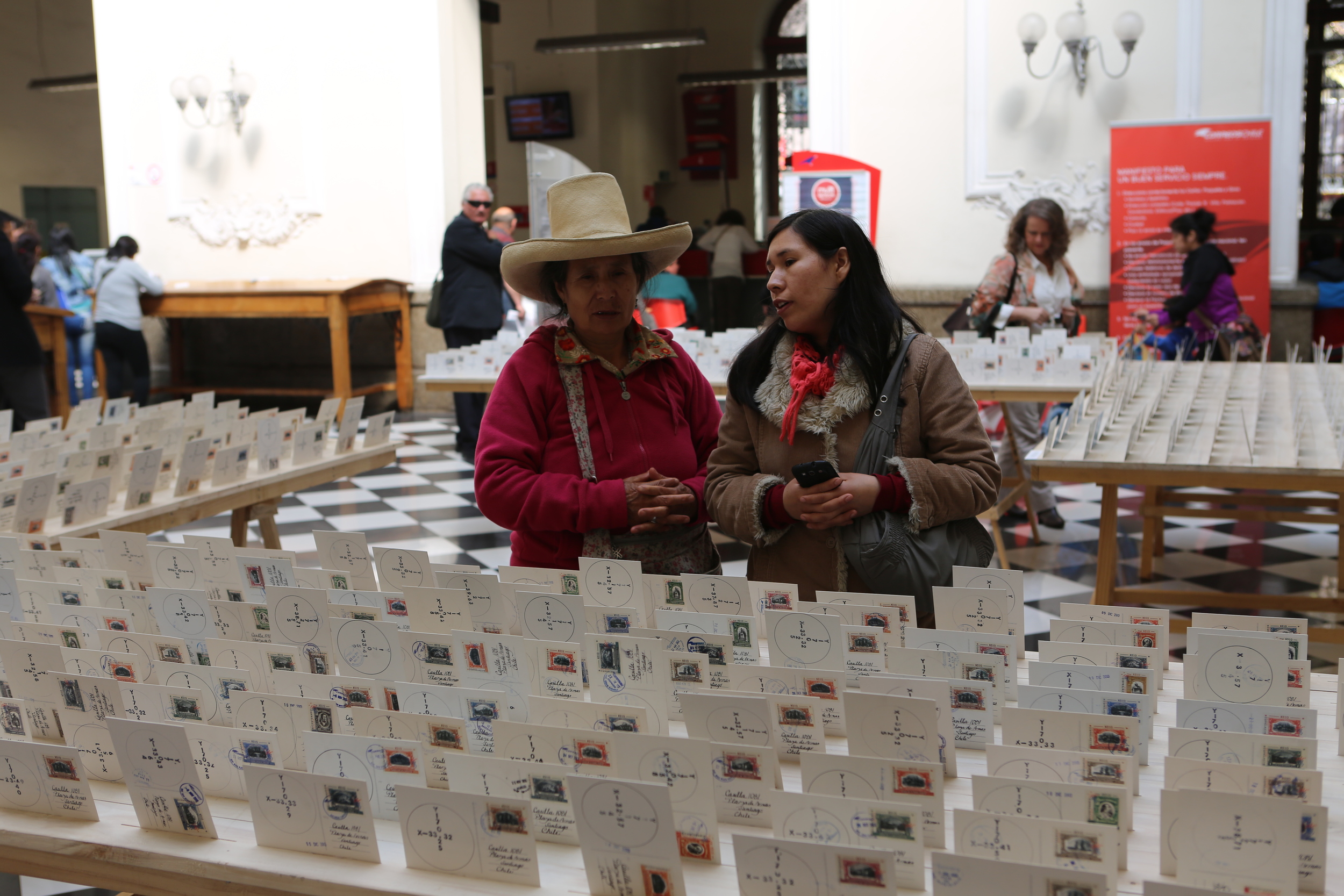
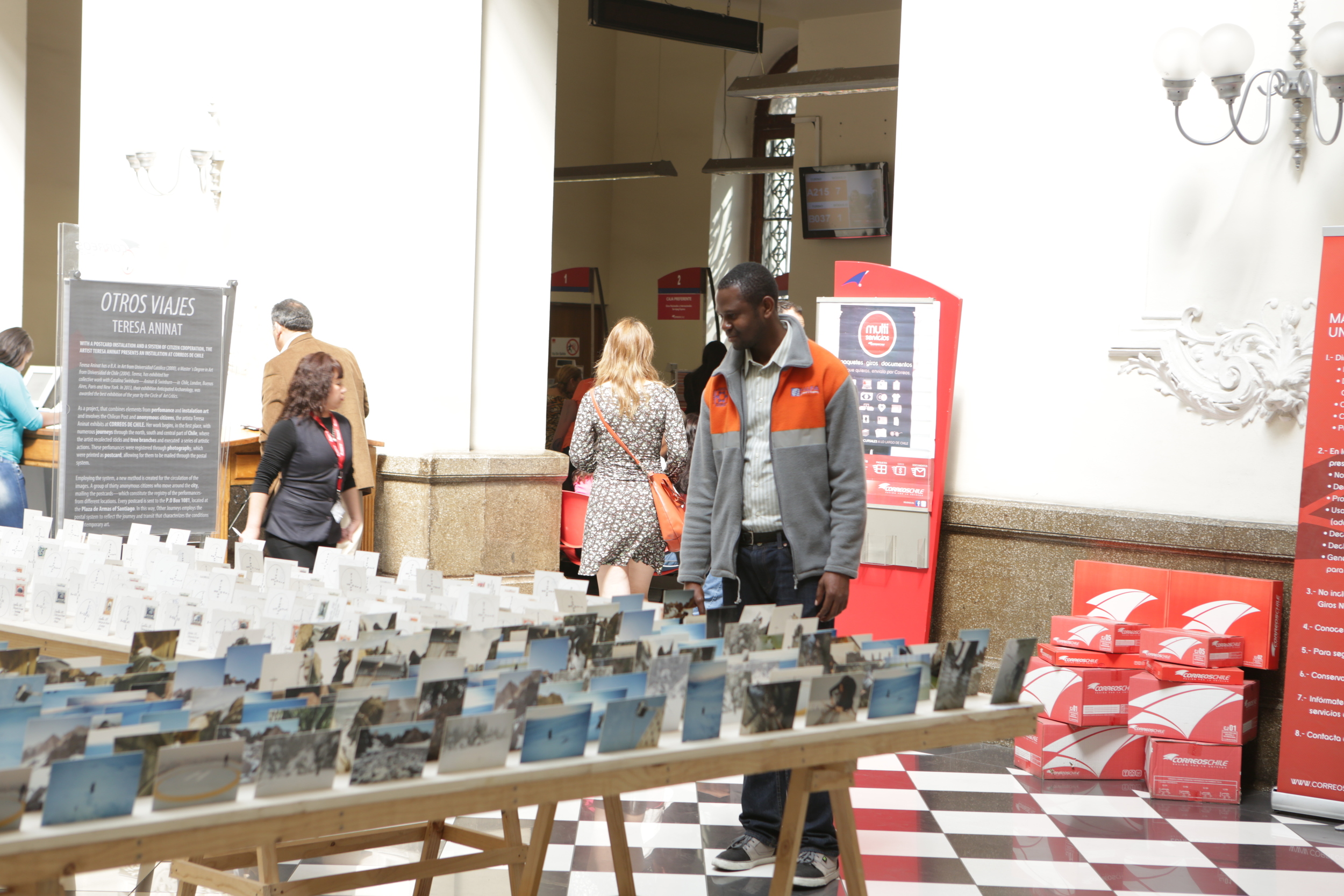
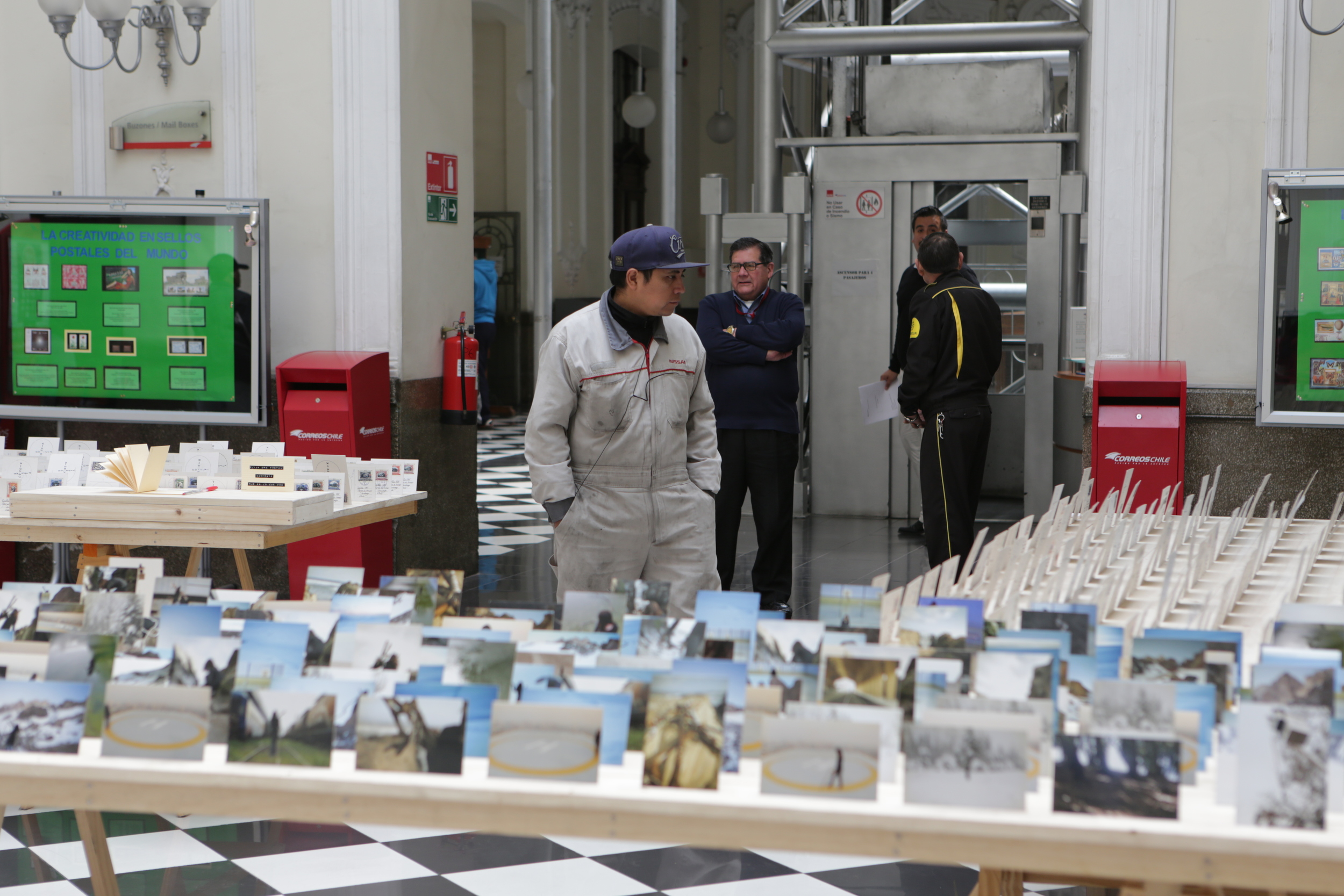
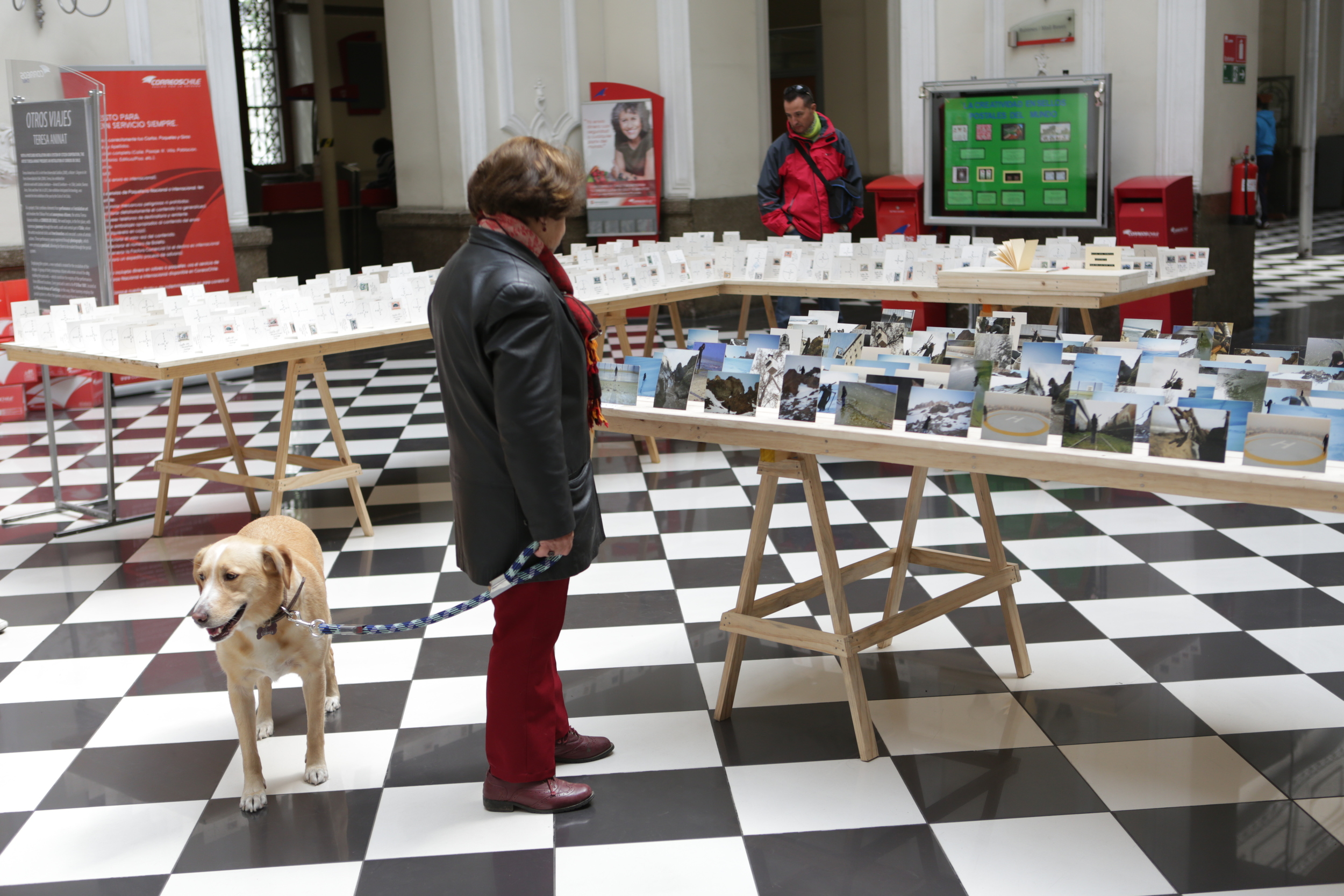
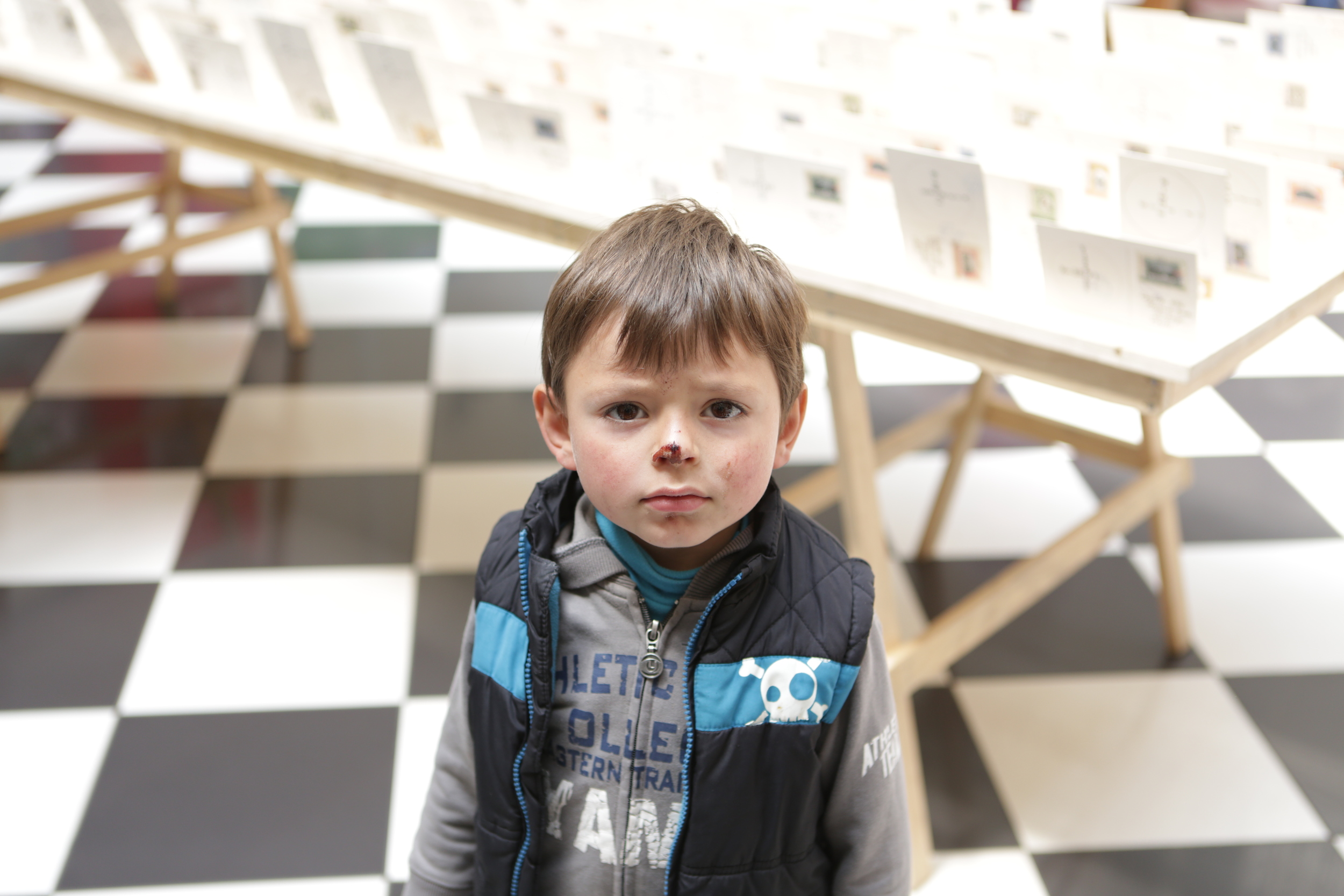
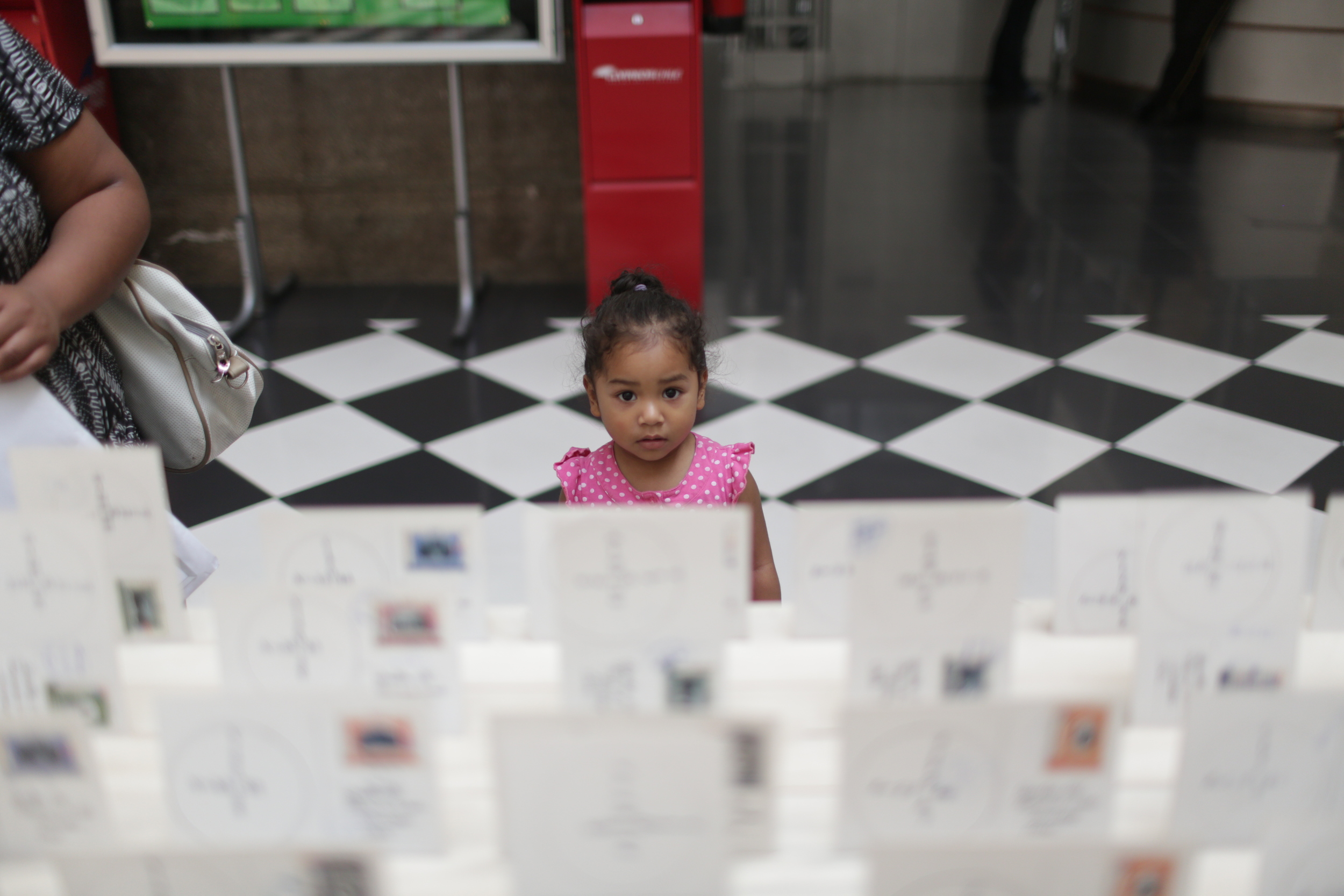
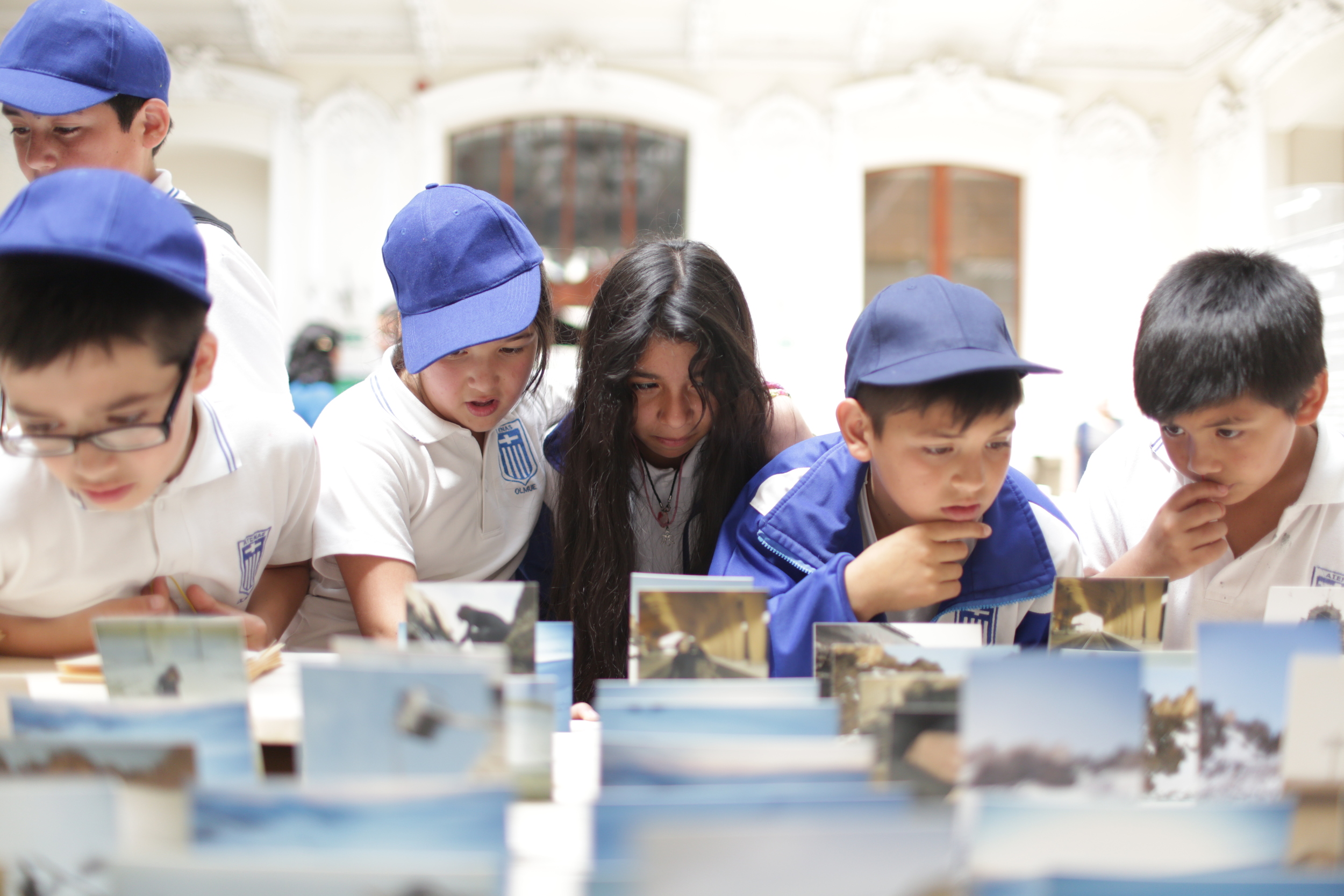
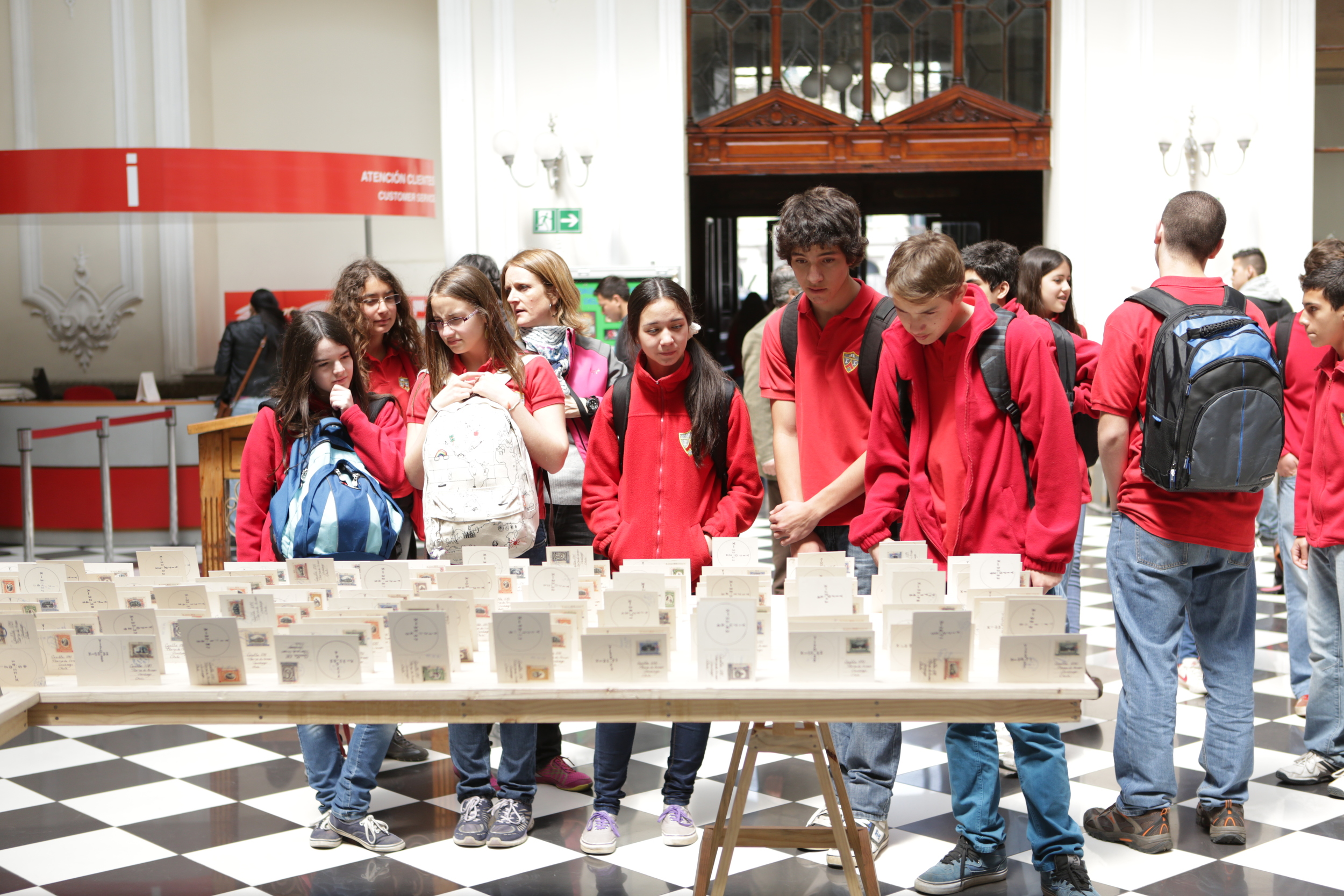
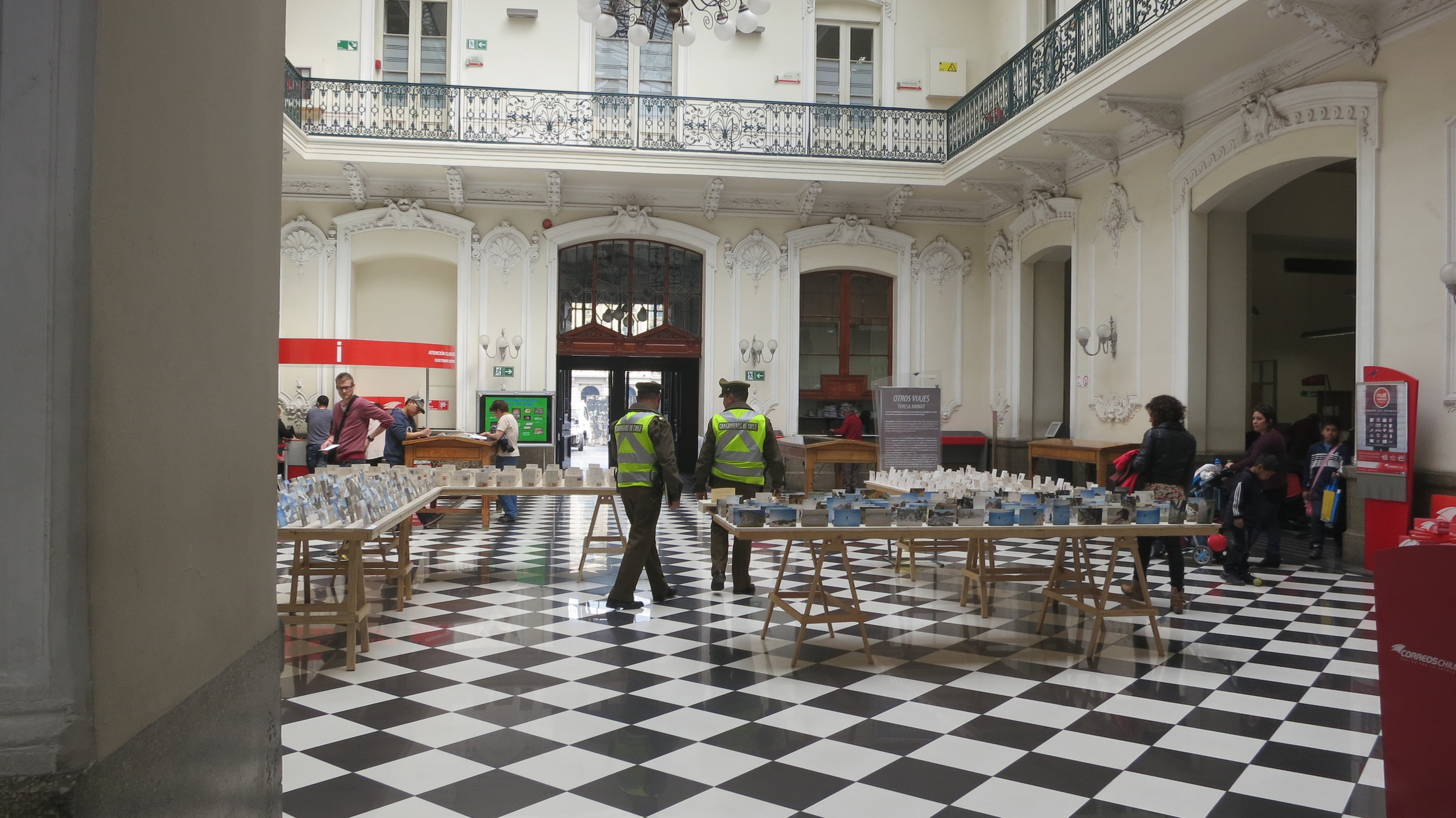
Transcripción de una nota de voz de veintiocho minutos y treinta y nueve segundos realizada el día 23 de septiembre del año 2014, segunda parte.
QUÉ ES LO QUE VES?
Periódicamente fui a Correos a ver mi exposición y a conversar con la gente que circulaba por el lugar. Al ser una institución abierta en pleno centro de Santiago, el público era muy numeroso y heterogéneo. Se trataba de personas realizando diversos trámites: envío de paquetes y sobres, inmigrantes completando formularios, turistas y escolares visitando el museo y el histórico edificio de correos. En nuestro encuentro muchas veces me proponían distintos lugares para hacer mis próximos viajes.
Decidí entonces dejar una bitácora abierta con la pregunta ¿qué es lo que ves? En este cuaderno recibí comentarios de distintas índole: piropos, mensajes de amor, añoranzas, críticas, e inclusive algunos teléfonos.
I regularly went to see my exhibition and talk to the people in the place. Being an open institution in the heart of Santiago, the audience was very numerous and heterogeneous. Citizens, immigrants completing forms, tourists and schoolchildren visiting the museum and the historic post office building. I interviewed them and they proposed different places to do my next trips.
I decided to write down the question, What do you see? in a book I made and asked the people to write their impressions. I received various comments: compliments, messages of love, criticism and even some phones.
LA ENTREVISTA
Decidí hacer aún más partícipe al público del lugar. Entraba a la sala de espera, elegía a una de las personas, me sentaba junto a ellos y establecía una conversación inicial de saludos: ¿Como está? ¿Cuánto rato ha estado esperando para hacer su tramite? Luego hacía mi solicitud: necesito que mire una postal y que conteste una pregunta con las primeras frases que vengan a su cabeza; lo voy a grabar como una nota de voz, su respuesta es anónima. Así entrevisté a muchas personas haciéndoles la pregunta ¿qué es lo que ves?, eligiendo una postal diferente para cada uno de ellos. Terminadas sus reflexiones les pedía que en una postal (cuyo anverso era blanco) anotasen con su puño y letra los datos del destinatario: casilla 1081, plaza de armas, Santiago de Chile - la misma casilla que había arrendado previamente para recibir las postales de Otros Viajes.
Posteriormente, cada uno de estas relatos los transcribí en braille en formato postal, dejando que la imagen se desvaneciera producto de la subjetividad de la mirada del otro y sustituyendo la mirada por el tacto denotando su condición de objeto que va de mano en mano.
I decided to approached the public in the place. I had to gain their confidence asking them: How are you? How long have you been waiting here in the post office? Then I made my request and told them: "I need to show you a photo and I will ask you a question which you must answer with the first words that come to your head. I'm going to record this in a voice memo". That is how I interviewed many people showing them a postcard and asking them: What do you see? When they finished their description I asked them to write on a white postcard, with their handwriting, the details: Box 1081, Santiago de Chile .
Later I transcribed in braille each of these interviews on a postcard. This new and white image was now a product of the subjectivity of the other's gaze. This new postcard with no colors and details made more important the sense of touching than seeing. Denoting the property of the object that goes hand by hand in the mail.
LOS RETRATOS
Producto de mis constantes viajes a correos y de mi constante vigilancia a mi casilla 1081 pude conocer a algunos de los arrendatarios de las casillas, conversábamos y me contaban de su historia en el lugar, cómo era antes, muchos de ellos tenían la su casilla desde hace más de 20 años. Finalmente éramos una gran comunidad establecida en un gran muro de bronce, vecinos en busca de papeles que nos eran remitidos por otros.
Product of my constant trips to the post office and as I watched my mail box Nº1081, I met some of the tenants of the other boxes. They told me their story with the post office, how it was before and how it had changed. Many of them had their mail box from more than 20 years. We were a community of neighbors established on a large bronze wall.
LA CERRADURA
THE KEYHOLE
Ojo de la cerradura de la Casilla 1081, 2015. Bronce, 20 x 8 x 5 cms.
Keyhole of the Mail Box Nº 1081, 2015. Bronze, 20 x 8 x 5 cm.










